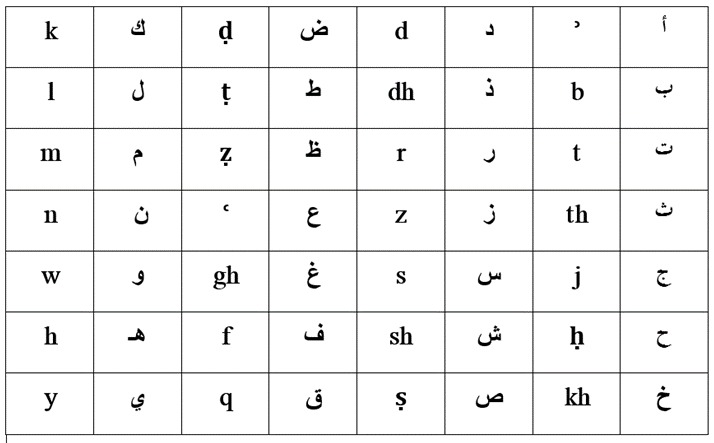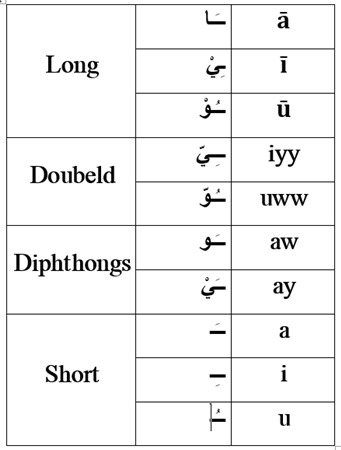Author Guidelines
Jurnal Al-Fawa’id: Jurnal Agama dan Bahasa (P-ISSN: 2088-9593 dan E-ISSN: 2774-3748) megundang para penulis dan peneliti untuk mengirimkan artikel ilmiah yang akan diterbitkan melalui jurnal ini. Adapun fokus dan cakupan dari jurnal ini adalah sebagai berikut: Aqidah Agama Islam, Fiqih Agama Islam, Sejarah Agama Islam, Pendidikan Islam, Dakwah Islam, Pengajaran Bahasa Asing (Bahasa Arab dan Bahasa Inggris), Sastra Bahasa Asing (Bahasa Arab dan Bahasa Inggris), Sejarah Pendidikan Bahasa Asing (Bahasa Arab dan Bahasa Inggris), Strategi Pengajaran Bahasa Asing (Bahasa Arab dan Bahasa Inggris), Media Pengajaran Bahasa Asing (Bahasa Arab dan Bahasa Inggris). Ada beberapa panduan yang perlu diperhatikan oleh setiap penulis yang akan mengirimkan artikel jurnalnya ke Jurnal Al-Fawa’id : Jurnal Agama dan Bahasa, sebagai berikut:
A. Panduan Umum Untuk Penulis
Semua naskah artikel diserahkan ke redaksi Jurnal Al-Fawa’id : Jurnal Agama dan Bahasa harus bersifat ilmiah, orsinil dan belum pernah diterbitkan di laman penerbitan artikel ilmiah manapun atau tidak sedang dalam proses editorial di jurnal lain yang ada kemungkinan akan diterbitkan. Kemudian artikel jurnal dikirim melalui Online Submission di alamat portal jurnal online milik Jurnal Al-Fawa’id : Jurnal Agama dan Bahasa https://jurnal.stai-ali.ac.id/index.php/Alfawaid/about/submissions , dimana penulis mendaftar terlebih dahulu sebagai Penulis dan/atau ditawarkan sebagai Reviewer secara online di https://jurnal.stai-ali.ac.id/index.php/Alfawaid/user/register. Jika penulis memiliki masalah dalam pengiriman online, silakan hubungi Kantor Redaksi di email berikut: jurnal@stai-ali.ac.id
B. Panduan Penulisan Jurnal Al-Fawa’id : Jurnal Agama dan Bahasa
Secara umum naskah yang akan dikirimkan kepada redaksi Jurnal Al-Fawa’id : Jurnal Agama dan Bahasa harus disiapkan sesuai dengan template artikel Jurnal Al-Fawa’id : Jurnal Agama dan Bahasa yang terdapat pada website, akan tetapi untuk penjelasan lebih detailnya adalah sebagai berikut:
- Tulisan dapat berbentuk konsepsi atau hasil penelitian dalam lingkup fokus dan cakupan Jurnal Al-Fawa’id : Jurnal Agama dan Bahasa, baik penelitian lapangan maupun penelitian kepustakaan.
- Sistemmatika penulisan artikel Jurnal Al-Fawa’id : Jurnal Agama dan Bahasa adalah sebagai berikut:
- Judul Artikel: Padat, Jelas dan Ilmiah. (Penelitian lapangan tambahkan lokus penelitian, judul ditulis dengan format Capitalize Each Word, font 14)
- Nama Penulis : nama, asal institusi, negara dan email penulis.
- Abstrak
Penulisan abstrak dimulai dengan tujuan penelitian, metodologi penelitian, gambaran singkat tentang latar belakang penelitian, hasil penelitian, dan novelty (temuan baru). Apabila abstrak disajikan dalam bahasa Indonesia atau bahasa Inggris, ditulis dengan font Times New Arabic 12, spasi 1. . Jika artikel berbahasa Arab, maka abstrak ditulis dengan berbahasa arab menggunakan font Traditional Arabic 16 dan spasi 1,5. Panjang abstrak adalah 200 - 250 kata dalam 1 paragraf (tanpa menjorok) - Keywords : 3 - 6 kata.
- PENDAHULUAN
Bagian pendahuluan berisi paragraf yang menjelaskan: 1) latar belakang, 2) permasalahan sesuai dengan konteks penelitian, 3) hasil kajian Pustaka, 4) ulasan penelitian terdahulu yang relevan dengan topik penelitian disertai perbedaan dengan penelitian terdahulu atau kebaharuan dalam penelitian. Jika artikel berbahasa Indonesia atau Inggris maka ditulis dengan font Times New Arabic 12 dan spasi 1,5. Jika artikel berbahasa Arab maka ditulis dengan font Traditional Arabic 16 dan spasi 1,5. - METODE PENELITIAN
Metode penelitian berisi paragraf yang menjelaskan tentang jenis penelitian, sumber data, teknik pengumpulan data, dan teknik analisis data yang dilakukan oleh peneliti. Untuk mempertajam analisis data penelitian, disarankan menggunakan pendekatan dengan teori-teori yang menunjang penelitian. Jika artikel berbahasa Indonesia atau Inggris maka ditulis dengan font Times New Arabic 12 dan spasi 1,5. Jika artikel berbahasa Arab maka ditulis dengan font Traditional Arabic 16 dan spasi 1,5. - HASIL DAN PEMBAHASAN
Hasil penelitian berisi paparan hasil analisis yang berkaitan dengan pertanyaan penelitian, sedangkan pembahasan berisi pemaknaan hasil dan perbandingan dengan teori dan/atau hasil penelitian sejenis. Jika artikel berbahasa Indonesia atau Inggris maka ditulis dengan font Times New Arabic 12 dan spasi 1,5. Jika artikel berbahasa Arab maka ditulis dengan font Traditional Arabic 16 dan spasi 1,5. - SIMPULAN
Berisi temuan penelitian yang berupa jawaban atas pertanyaan penelitian atau berupa intisari hasil pembahasan, yang disajikan dalam bentuk paragraf. Jika artikel berbahasa Indonesia atau Inggris maka ditulis dengan font Times New Arabic 12 dan spasi 1,5. Jika artikel berbahasa Arab maka ditulis dengan font Traditional Arabic 16 dan spasi 1,5. - DAFTAR PUSTAKA
Bagian Daftar Pustaka berisi sumber resefersi yang digunakan dalam penulisan artikel, dengan ketentuan: 1) jumlah referensi yang digunakan minimal 20 rujukan, 2) minimal 50% dari total rujukan yang digunakan merupakan terbitan 10 tahun terakhir, 3) acuan sumber primer (jurnal) minimal 50% dari total rujukan. Jika artikel berbahasa Indonesia atau Inggris maka ditulis dengan font Times New Arabic 12 dan spasi 1,5. Jika artikel berbahasa Arab maka ditulis dengan font Traditional Arabic 16 dan spasi 1,5. Penyajian daftar pustaka wajib menggunakan aplikasi manajemen referensi seperti mendeley, zotero, dan lain-lain dengan styleAmerican Psychological Association (APA) 7th edition.
- Naskah diketik dengan MicrosoftWord dengan ketentuan sebagai berikut:
- Model huruf untuk artikel bahasa indonesia dan bahasa inggris adalah “Times New Arabic”, baik untuk tubuh maupun tulisan maupun catatan kaki. Ukuran font 12 (dua belas) untuk tubuh tulisan dan font 10 (sepuluh) untuk catatan
- Adapun ketentuan penulisan nama penulis, email dan afiliasi adalah sebagai berikut:
Nama Penulis Pertama1), Penulis Kedua2), dan seterusnya3)…4)
(Times New Arabic, Font 11, Bold, spasi 1, Nomor Urut Penulis)
1,2,3)Afiliasi, Kota, Negara
E-mail: Penulis satu, Penulis dua, dst…
(Times New Arabic 12, spasi 1, nomor urut email)
- Model huruf untuk artikel bahasa arab adalah “Traditional Arabic”, baik untuk tubuh maupun tulisan maupun catatan kaki. Ukuran font 16 (dua belas) untuk tubuh tulisan dan font 14 (empat belas) untuk catatan kaki
- Panjang artikel antara 5.000 - 8.000 kata
- Kutipan ditulis dalam bentuk innote dengan kriteria sebagai berikut:
-
Contoh kutipan menggunakan style American Psychological Association (APA) 7th edition :
(Rohhani & Farid, 2018)
-
Contoh daftar pustaka menggunakan style American Psychological Association (APA) 7th edition:
- Artikel Jurnal
Rohhani, I., & Farid, F. (2018). ʾIʿdād al-Kitāb al-Taʿlīmiy li Tanmiyah Mahārah al-Kalām ladā Ṭullab al-Ṣaff al-Thālith (al-Qism al-Dīniy li al-Banīn) bi al-Madrasah al-Thānawiyyah al-ʾŪlā bi Paciran Lamongan Jawa al-Sharqiyyah. Jurnal Al-Fawa’id : Jurnal Agama dan Bahasa, 8(1), Art. 1. https://doi.org/10.54214/alfawaid.Vol8.Iss1.107
- Buku Berbahasa Arab
Jazāʾiri (al), J. (1990). ʾAisar al-Tafāsīr li Kalām al-ʿAliy al- Kabīr al-Mujallad al-Awwal. Rachem Advertising.
- Buku Berbahasa Indonesia
Mulyana, D. (2002). Metodologi Penelitian Kualitatif. Remaja Rosdakarya.
- Wawancara
Bimantara, A. (2023, Februari 13). Wawancara.
- Website
Kemenkes. (2023, Januari 19). Vaksin Dashboard. https://vaksin.kemkes.go.id/#/vaccines
-
Transliterasi Arab-Indonesia menggunakan font Times New Arabic, adapun bentuk informasi detail tentang Romanisasi Arab, silahkan merujuk ke sistem transliterasi Pedoman Library of Congress (LC) atau dengan ketentuan pedoman translitelasi sebagai berikut:


C. Pedoman Pengajuan Online/Submission
Penulis harus terlebih dahulu mendaftar sebagai Penulis dan/atau ditawarkan sebagai Reviewer melalui alamat berikut: https://jurnal.stai-ali.ac.id/index.php/Alfawaid/user/register Penulis harus mengisi formulir sedetail mungkin di mana formulir bertanda bintang harus dimasukkan. Setelah semua kotak teks formulir diisi, Penulis mengklik tombol “Daftar” untuk melanjutkan pendaftaran. Oleh karena itu, Penulis dibawa ke antarmuka pengiriman penulis online di mana Penulis harus mengklik "Pengiriman Baru/New Submission". Di bagian Mulai Pengajuan Baru, klik "'Klik Di Sini/Click Here': untuk melanjutkan ke langkah pertama dari proses pengiriman lima langkah". Berikut ini adalah lima langkah dalam proses pengajuan online:
Langkah 1 - Memulai Submission: Pilih bagian jurnal yang sesuai, e. Artikel Penelitian Asli, Artikel Review, atau Komunikasi Singkat. Dengan demikian, penulis harus memberi tanda centang pada daftar periksa pengiriman.
Langkah 2 – Mengunggah Submission: Untuk mengunggah manuskrip ke jurnal ini, klik Browse pada item Unggah file kiriman dan pilih file dokumen manuskrip yang akan dikirimkan, lalu klik tombol Unggah.
Langkah 3 – Memasukkan Metadata Submission: Pada langkah ini, metadata penulis detail harus dimasukkan termasuk ditandai autho yang sesuai. Setelah itu, judul manuskrip dan abstrak harus diunggah dengan menyalin teks dan menempel di kotak teks termasuk kata kunci.
Langkah 4 –Konfirmasi Penyerahan: Penulis harus memeriksa akhir dokumen naskah yang diunggah di st ini Untuk mengirimkan naskah ke jurnal Jurnal Al-Fawa’id : Jurnal Agama dan Bahasa, klik tombol Selesai Penyerahan setelah dokumen benar. Penulis yang sesuai atau kontak utama akan menerima pemberitahuan melalui email dan akan dapat melihat kemajuan pengiriman melalui proses editorial dengan masuk ke situs alamat web jurnal.
Setelah penyerahan ini, Penulis yang mengirimkan naskah akan mendapatkan email konfirmasi tentang penyerahan tersebut. Oleh karena itu, Penulis dapat melacak status pengiriman mereka kapan saja dengan masuk ke antarmuka pengiriman online. Pelacakan pengiriman termasuk status tinjauan naskah dan proses editorial.
